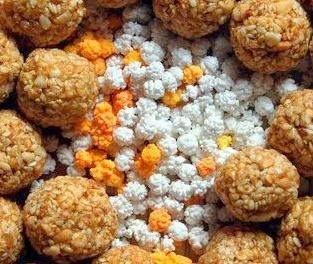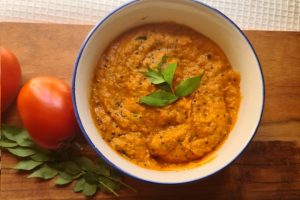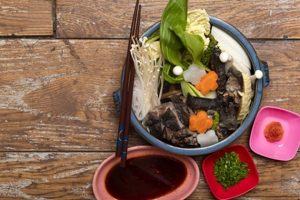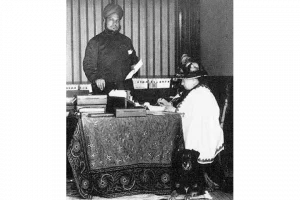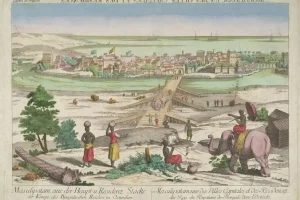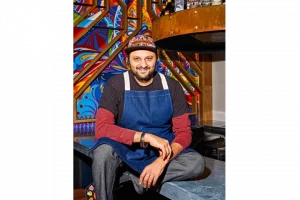This Makar Sankranti, the harvest festival marking an end to winters as the “sun enters Capricorn”, and celebrated all over India in different ways—from pongal to bihu and khichdi—you may be eating an ancient Indian ingredient: til, or sesame.
Til goes into many festive confections all over India this time of the year. In western Indian, tilgul, or sesame and jaggery laddoos, are the festive special. As people exchange these sweets, the saying goes: “tilgul ghya, goad goad bola” (“take tilgul and talk sweet”). So, here’s to sweet beginnings.
Made it with my own hands 👐#MakaraSankranti #Tilgul pic.twitter.com/Ch6dHPz3uz
— $@M (@SAMTHEBESTEST_) January 14, 2023
Both til, tilgul, as also what we call til patti have ancient provenance. Sesame was found at Indus Valley excavation sites and finds a mention in later Vedic literature. Tilgul, the Maharashtrian sweet of today, is mentioned as “palala” (laddoos made with soft jaggery and sesame) in the Sutra texts, according to KT Achaya’s The Illustrated Foods of India. Palala was sold commonly in the markets of northern India, it would seem.
Today, there are contentions that sesame may have originated in Africa’s savannah region, but it may easily have had Indian provenance too as was believed earlier; and even the plant’s biological name seamum indicum is a reference to that theory of origin.
At any rate, as early as the 3rd century BC, there are descriptions of the plant growing wild along with millets in India. An early Greek writer Aristobolus, part of Alexander’s party, describes til “cakes”, common even then in the markets of northern India, as “cakes of sesamum and honey” (Early Indian sugar or jaggery made with sugarcane juice being unknown to the rest of the world at that time; the west’s only context was honey for any sweetener). Sesame cakes and honey are mentioned thereafter in ancient Greek recipes and today’s nut candies in that part of the world trace their origin to those early foods.
How did the ancient Indian sesame, as sesame candies, become such popular foods put to culinary and ritualistic use all over the world? How did the cult of til disperse both east and west and become an intrinsic part of diverse culinary cultures?
From the Middle East and the Mediterranean to China and Japan, not only is sesame used in some of the most ancient and popular eats but it is an ingredient that is deeply rooted in the stories of these regions.
All of us know Alibaba’s tale from the Arabic compilation of fables and folk tales collected over many centuries, One Thousand And One Nights or Arabian Nights. The first English language edition of “The Arabian Nights’ Entertainment” came about in the 18th century, around 1720. But Arabian Nights draws from 9th century Persian Hezar Afsan (A Thousand Tales) and the 8th century Alyf Laila, in which the earliest core of stories borrow from the Panchatantra and Jataka tales of India.
Among the oldest surviving collection of Indian fables, the #Panchatantra was perhaps written around 200 BC by the great scholar Pandit Vishnu Sharma. But #DidYouKnow it has inspired fables, nursery rhymes & ballads like The Arabian Nights, Aesop’s Tales & more across the world? pic.twitter.com/BfIjqxBhDv
— Amrit Mahotsav (@AmritMahotsav) May 8, 2022
The art of storytelling from ancient India –exemplified by Vishnu Sharma’s Panchatantra—where fables are arranged within the frame of a story, was obviously borrowed by Arabian Nights (as well as later Islamic traditions of dastans, including the dastan Amir Hamza written in Persian presumably in the time of Mahmud Ghazni).
At any rate, one of the most memorable lines from the story of Alibaba is “khul ja simsim” or “Open sesame”. It is a magic password to reveal the treasures of the cave, borrowing from the imagery of the sesame pod bursting open to reveal the oilseeds inside. Why was sesame chosen as that one ingredient in this magical incantation?
Sesame’s status as a ritualistic, mystical ingredient was well established in the ancient world by the time of Arabian Nights.
In ancient India, the seed was used as food in Vedic rituals connected with life and death, and in Ancient Babylon and Sumer, pre-Islamic priests used the oil in incantations. In ancient Egypt, it was used to embalm mummies and as an aphrodisiac. It is no wonder that festivals that celebrate nature and its cycles—such as our own sankrant— mark the cycles of death and rejuvenation, the end of winter and coming of the sun, do so with the ancient mystical grain. Sankrant’s eats remind us of that.
Sesame, as well as small rounds made of jaggery, rice and the seed, were popular sweets in Buddhist times, mentioned in Buddhist texts from India. With Buddhism’s spread to China from India, sesame too went East. It is believed to have spread from China to Japan –where it does not grow but is an intrinsic part of language and culture. To grind sesame means to curry favour in Japan. “Goma” refers to both sesame and “to burn” in Japanese and is thought to be the phonetic translation from the Sanskrit “homa” of the Vedic fires.
Til laddu of India looks similar to the goma dango of Japan. They are both traditional sweets coated in sesame seeds, well loved in India and Japan. pic.twitter.com/SZGuDJf7r4
— 🇯🇵 Rash Behari Bose; the 80th Anniversary of INA (@boseofjapan) June 22, 2018
Goma-ae is a popular dish in high end Japanese restaurants all over the world today, including in India, where the likes of Wasabi at the Taj in Mumbai and Megu at the Leela Palace in Delhi serve this. A dish popular with vegetarians, gomae, rightly goma-ae, literally means sesame sauce, but is a side dish of vegetables in sesame sauce.
At Megu, this side comes as spinach with thick lashings of a creamy sesame sauce, which may in fact remind you of the Middle-Eastern tahini, the all-important sesame paste from the region that goes into hummus, and is a mezze darling of modern day casual dining in chic capitals of the world.
Tahini is a condiment that is made from a paste of roasted, hulled sesame seeds. It can be served as a dip by itself, or mixed with chickpeas (in hummus), with aubergine (in babaganoush) or with sugar (in halva). In fact, the first reference to tahini, so intrinsic to all the food of the Middle East and Levant (as also available as a nut butter in the west) is in the 13th century Arabic cookbook Kitab Wasf al-Atima al-mutada.
One of the oldest cookbooks in the world, with no named author, the kitab mentions another recipe that may be familiar to us, the halva!
The halva, a generic name for sweets in Arabic, today connotes the sesame halva to much of the world where Levantine cuisine has spread. It is of course the Indian Subcontinent’s beloved dessert too—but done differently, with sooji, vegetables like carrots and gourds, or dals and nuts like moong and badam, often combined with khoya and/or ghee, milk solids, that are distinctive to the Indian art of mithai making.
This halva is made by grinding sesame seeds into tahini paste pic.twitter.com/sCCQvuDQyN
— Insider (@thisisinsider) July 22, 2019
But one of the oldest Arab halvas is the sesame halva, made with tahini, sugar, and often also including pistachios, almonds, vanilla and egg whites. At its heart however, the Middle Eastern halva is a mix of sesame paste and sugar, reminiscent of not just the Indian confection gajak, that is widely eaten in northern and central India in winter, but also the sesame cakes mentioned by Alexander’s companions when they came to India.
Gajak, or gazak, as my family calls it (sourcing the best from Meerut, each winter) at its most basic combines sesame seeds with jaggery. More elite versions use nuts and sugar sprinkled with rose water et al, bringing it closer to Middle Eastern and European candy traditions.
The sesame halva is clearly a cousin of the Indian gazak, the latter using the jaggery instead of refined sugar, and crushed sesame seeds, instead of the oiled sesame paste. Gazak is a generic word for snack in Arabic, and while that may suggest middle eastern roots, could the earlier ancient Indian til laddoo (and til patti, or “cakes”) have influenced this medieval Arabic halva that is believed to date back to the 8th-9th centuries.
After all, the wide spread diffusion of stories, Ayurveda and Buddhism along the Silk Road from India to Central Asia and the Mediterranean merged tastes and ideas too.
In the Italian town of Cremona, “torrone”, a type of nougat, is a nut candy that is also a cousin of the gazak or patti, and of the Arabic sesame halva. Sugar, egg whites and almonds combine to form a light nougat, which may remind you of certain types of softer gazak. The torrone too traces its history to Andalusia, or the al-Andalus of the Moors of the 8th century; sesame in the Arabic halva having been replaced by other nuts of the Mediterranean.
March 26 is National Nougat Day @Foodimentary Torrone di Cremona 🇮🇹 is Italy’s traditional nougat pic.twitter.com/wzc90Z8Ays
— Francine Segan (@FrancineSegan) March 26, 2018
An entire genre of winter specials round the world may in fact owe their origins to India’s sesame stories.
Also Read: How Cinnamon from India spiced up Christmas in Europe
(Anoothi Vishal is the author of Mrs LC’s Table. She is also a columnist and food writer, specialising in cuisine history)






